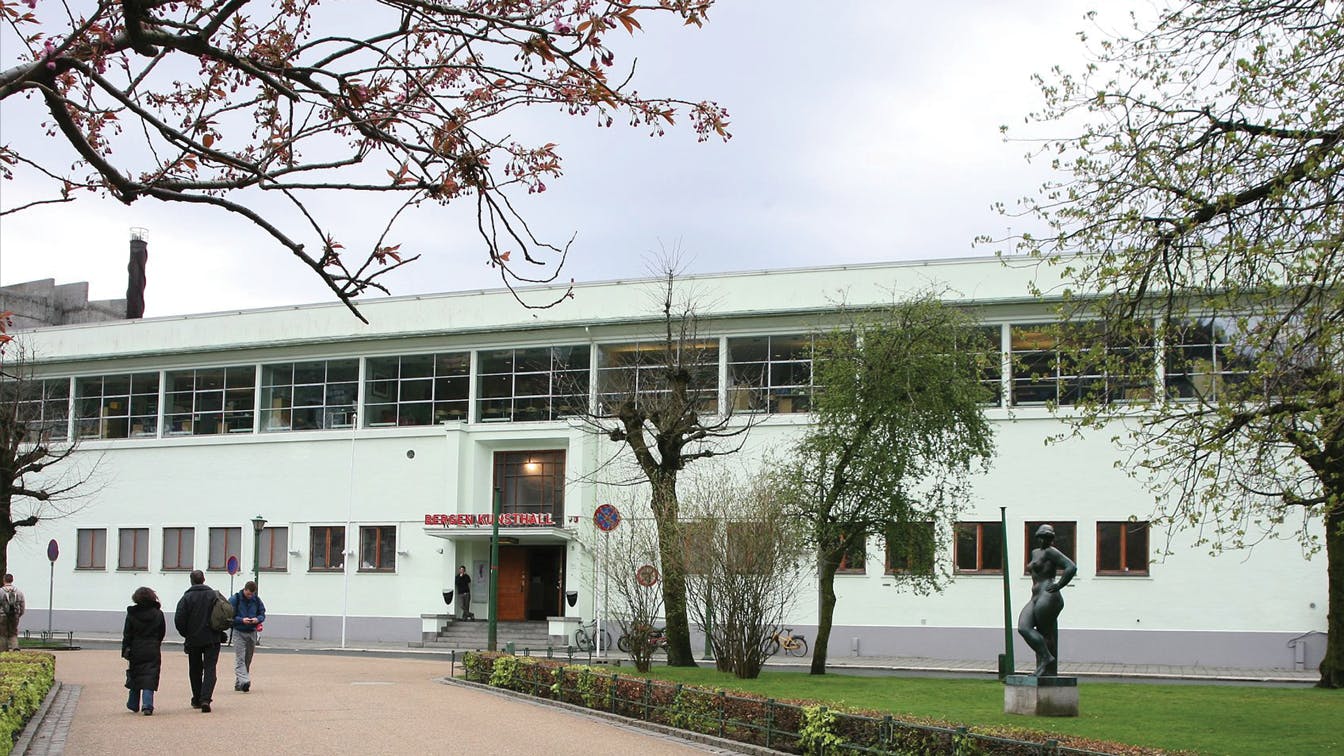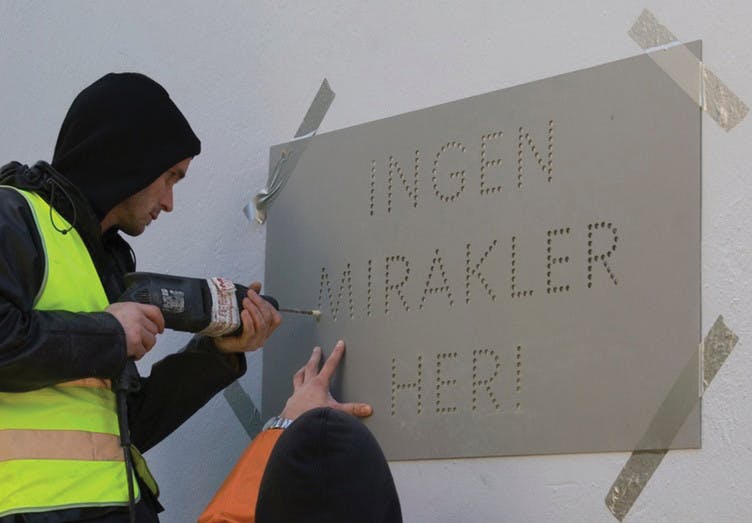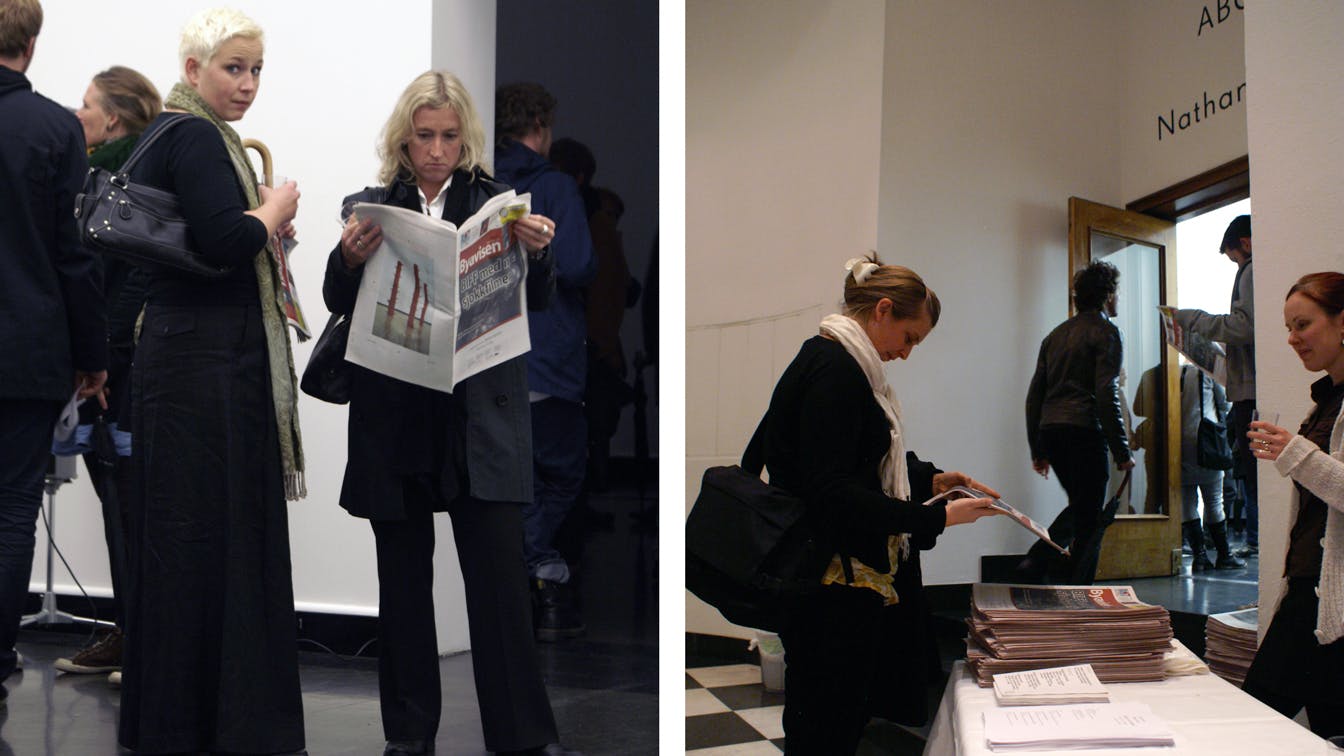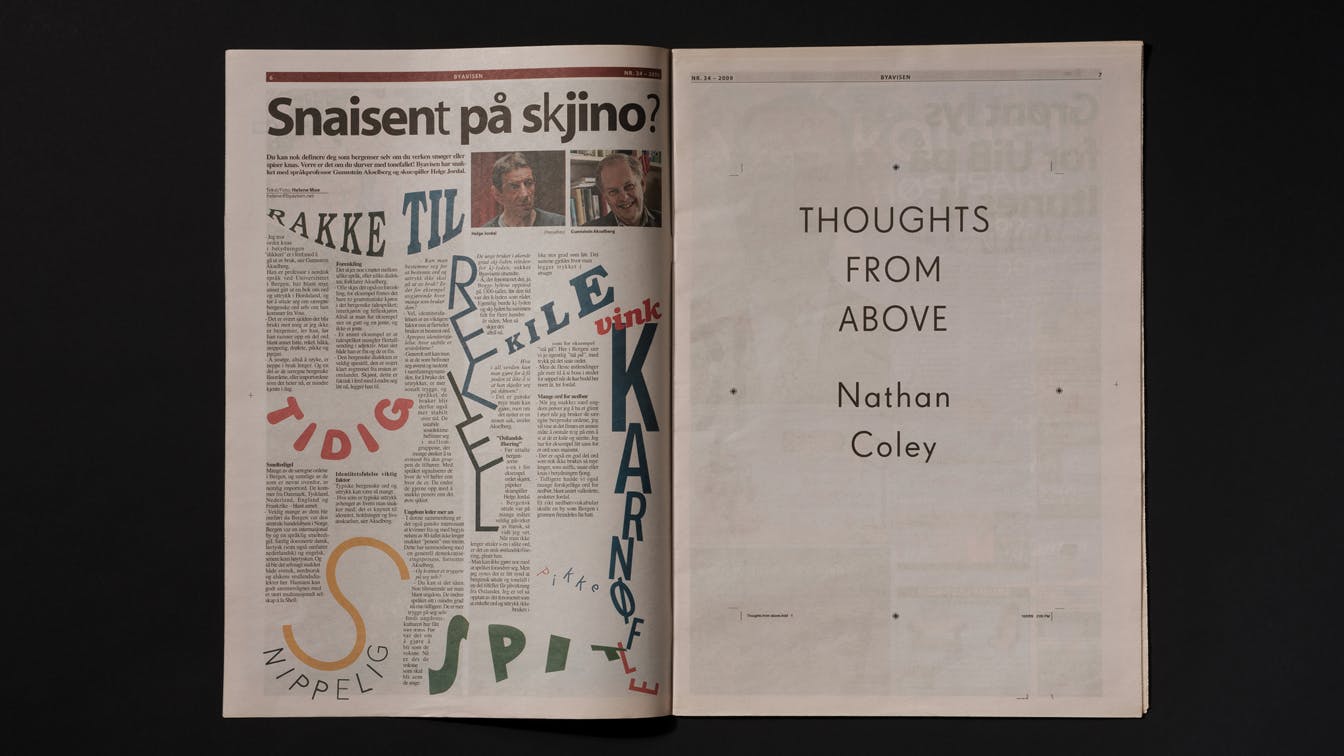
Bergen city as an exhibition space An exhibition catalogue circulated to 100.000 people
Strategy | Concept | Miscellaneous
Site-specific art
Thoughts From Above was the third and final part of Per Gunnar Eeg-Tverbakk’s fellowship project, Space for Interference. The project featured works of art with a place-related and intervening character, and the exhibition dealt with the work of British artist Nathan Coley.

Bergen Kunsthall. Foto:Nina Aldin Thune
Apart from the exhibition, which was shown at Bergen Kunsthall, Nathan Coley made new works at selected places in Bergen city centre. The works of art, which consisted of sentences drilled onto the walls of a shopping mall, a classroom and on the outside of the police station, influenced and changed the perception one had of the place.

Selected walls: As part of the exhibition, sentences were drilled into selected walls around the center of Bergen.

Context as content
In our efforts to promote the exhibition and build expectation, we wanted to build on the idea of the site specific. The client also wanted to convey the exhibition to a wide audience by creating engagement and arousing curiosity among the locals.

In Bergen, the local newspaper, Bergen Byavis, had a weekly circulation of 100.000, being distributed to every household in the centre of the city. We wanted to use this newspaper as the context of our communication. Through negotiations with the newspaper, we bought 11 pages of advertising space, as well as parts of the front and back of the newspaper in the edition being distributed on the exhibition’s opening day. This way we were able to print the entire exhibition catalogue in chronological order in Bergen Byavis.
Have the printers made a mistake?
Nearly 1/3 of the newspaper that the subscribers received on the opening day consisted of English texts and pictures about Nathan Coley and the upcoming exhibition. To clarify that this was a meeting between two worlds – between an exhibition catalogue and a newspaper – we operated with a somewhat smaller format than the rest of the newspaper. This contributed to the feeling that two print jobs had been shuffled around, the result being a strange hybrid between a tabloid newspaper and an art catalogue.

Newspaper as an exhibition catalog: At the opening of the exhibition, visitors were given Bergen Byavis.
The people who read the catalogue copy quickly understood that this was not a coincidence, but a way to communicate the intervening character of the exhibition. This resulted in many visitors on the opening day, and became the starting point of a number of discussions concerning the position of art outside the gallery's four walls.









